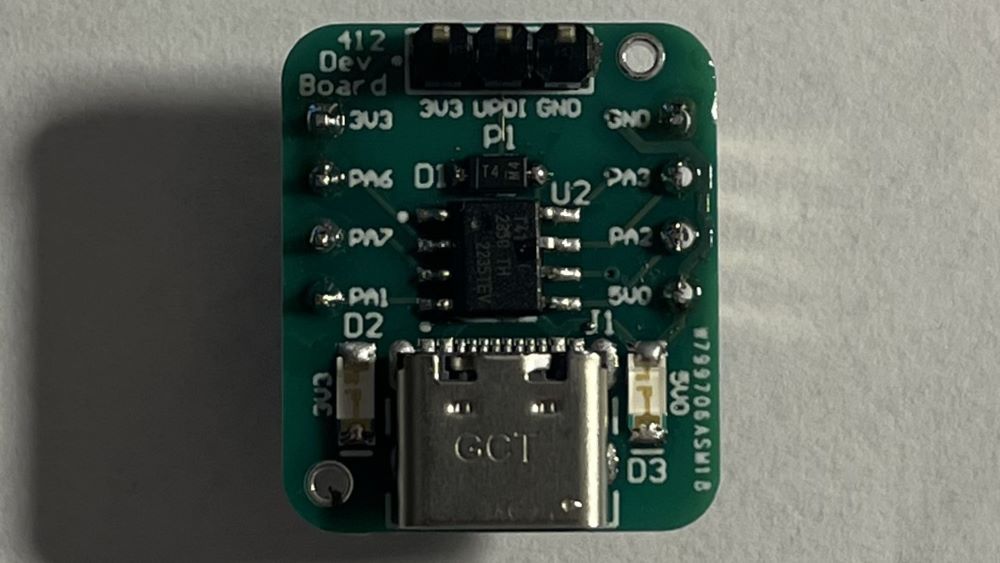ATtiny412 Dev Board
Circuit Board
This board is designed to be an ultra-compact microcontroller Dev Board for prototyping of small and simple MCU-needing projects. It features a UPDI programming header and two additional headers for all GPIO pins of the MCU as well as power. It snaps right into the middle of a breadboard as well for ease of prototyping. It can be powered via the power pins on the device (at 5V or 3.3V) or via USB-C.
This project is sponsored by PCBWay, a wonderful and easy to use PCB manufacturer.


